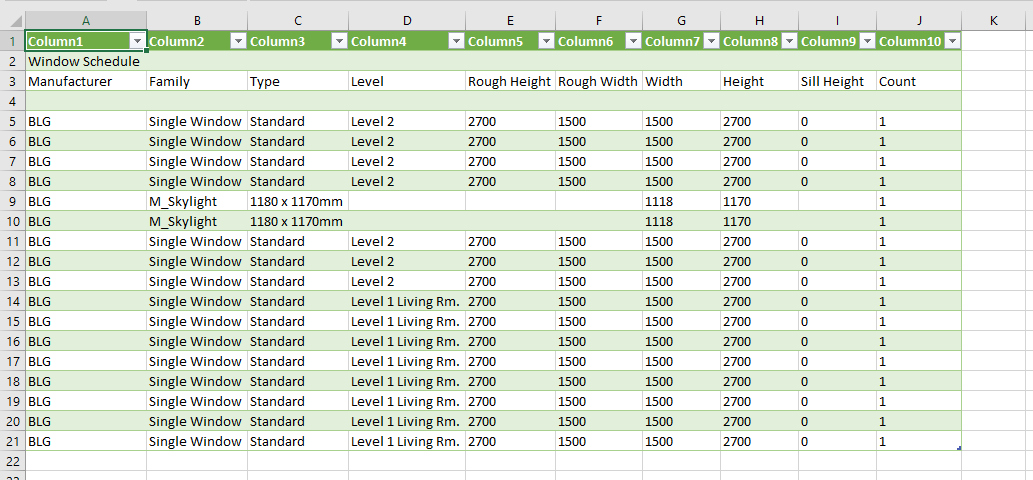Import Excel into Revit: Simplifying Your Process
Wiki Article
Revit Accelerator: Excel Combination Techniques for Increasing Efficiency and Cooperation
In this article, we will certainly explore the advantages of integrating Excel into your Revit workflows. And also, we will certainly share finest practices for flawlessly integrating Excel right into your Revit jobs. Obtain prepared to supercharge your Revit experience with our Revit Accelerator: Excel Integration Strategies!Benefits of Excel Assimilation in Revit
The advantages of Excel combination in Revit are various and can greatly enhance efficiency and cooperation. By effortlessly connecting these 2 powerful devices, you can enhance your process and conserve useful time. With Excel integration, you can conveniently import and export information between Revit and Excel, allowing you to utilize the strengths of both programs.
One more advantage of Excel assimilation is the capability to develop dynamic routines and reports. By connecting your Revit design to an Excel spreadsheet, any type of adjustments made in Revit will immediately upgrade in the matching Excel file. This makes it simple to generate updated timetables, amount departures, and various other task documents.
Excel assimilation in Revit likewise enables far better cooperation among staff member. With the capability to import and export data, you can conveniently share details with coworkers that may not have access to Revit. This advertises reliable interaction and enables better sychronisation and decision-making.
Streamlining Process With Revit and Excel
Streamlining workflows with Revit and Excel can substantially boost performance and partnership. By integrating these two powerful tools, you can enhance your layout procedure and improve communication within your team. With Revit, you can develop 3D versions and create thorough building and engineering paperwork. Nevertheless, when it involves information administration and evaluation, Excel is the best software application. By incorporating the capabilities of Revit and Excel, you can effortlessly transfer data between both applications, getting rid of the need for hands-on data entry and decreasing the danger of errors.
Making Use Of Revit and Excel together enables you to utilize the toughness of each program - revit tools. You can export data from Revit right into Excel, where you can carry out intricate calculations, develop charts and charts, and examine the information in a much more effective and well organized fashion. On the various other hand, you can import data from Excel right into Revit, allowing you to quickly upgrade your models and paperwork based on modifications made in Excel
The integration of Revit and Excel likewise promotes cooperation among group members. By sharing Excel data, you can conveniently interact and collaborate on layout and construction-related data. This boosts sychronisation and makes certain that every person is working with the most current info.
Taking Full Advantage Of Partnership With Excel and Revit
To make best use of cooperation with Excel and Revit, you can effortlessly share and upgrade layout and construction-related information with your group. By incorporating Excel with Revit, you can remove the demand for hand-operated information entrance and decrease the danger of errors. With just a couple of clicks, you can import Excel spreadsheets into your Revit model, allowing you to quickly accessibility and manipulate the data. This assimilation allows you to team up more effectively with your group, as every person can service the exact same information in real-time.Among the vital benefits of making use of Excel in combination with Revit is the ability to upgrade data in both programs concurrently. Any kind of changes made in Excel will immediately be mirrored in Revit, and the other way around. This guarantees that everyone is dealing with the most current info, avoiding confusion and conserving important time.
Additionally, Excel supplies powerful tools for examining and arranging data, which can considerably enhance your cooperation initiatives. You can create personalized reports and graphes in Excel, assisting you to imagine and communicate important project info effectively. When providing data to stakeholders or making educated choices based on project metrics (import excel into revit)., this can be specifically helpful.
Advanced Techniques for Increasing Efficiency in Revit Using Excel
By making use of advanced strategies in Revit, you can dramatically increase your productivity by leveraging the power of Excel. With Revit's Excel combination attribute, you can connect Excel spread sheets straight to your Revit model, allowing you to easily handle and upgrade data.
In addition, you can utilize Excel macros to automate repeated jobs in Revit (revit add ins). Macros allow you to tape-record a collection of actions and play them back with a solitary click, saving you time and initiative. As an example, you can produce a macro to instantly generate area schedules or update parameter worths in bulk.
Finest Practices for Excel Integration in Revit
Utilizing Excel as a data management device in Revit enables for effective administration and upgrading of data. One of the ideal methods for Excel integration in Revit is to create a clear and arranged information framework. By complying with these best practices, you can successfully use Excel as a data administration device in Revit and boost your performance and cooperation.Conclusion
In final thought, incorporating Excel with Revit can greatly enhance productivity and collaboration in the layout process. By leveraging the power of Excel, Revit customers can accomplish higher degrees of efficiency and collaboration in their jobs.With Excel combination, you can easily import and export information in between Revit and Excel, enabling you to utilize the toughness of both programs.
One of the crucial advantages of Excel integration is the ability to utilize Excel formulas and features within Revit. By connecting your Revit model to an Excel spreadsheet, any adjustments made in Revit will instantly update in the matching Excel documents. On the other hand, you can import data from Excel into Revit, enabling you to quickly upgrade your versions and documentation based on modifications made in Excel.
revit add ins With Revit's Excel assimilation feature, you can link Excel spreadsheets straight to your Revit version, enabling you to quickly manage and update information.
Report this wiki page